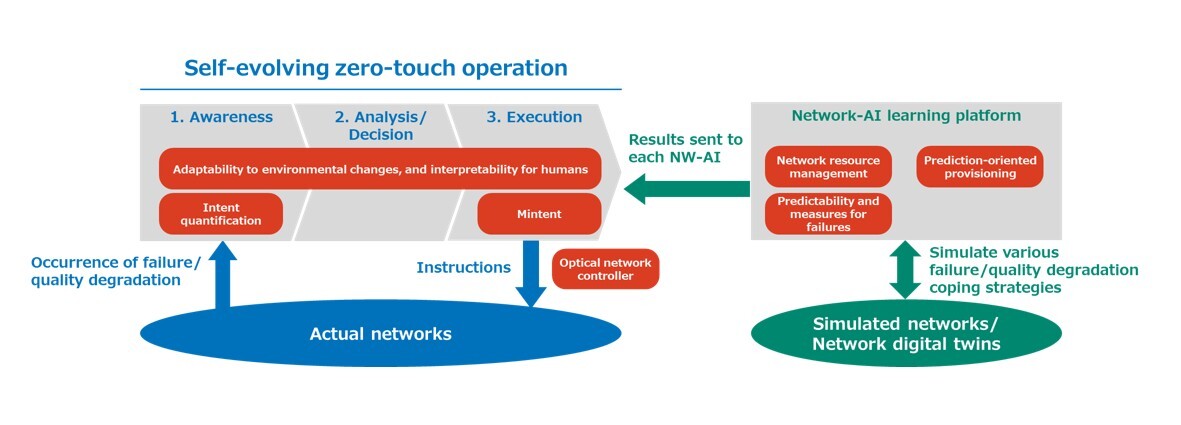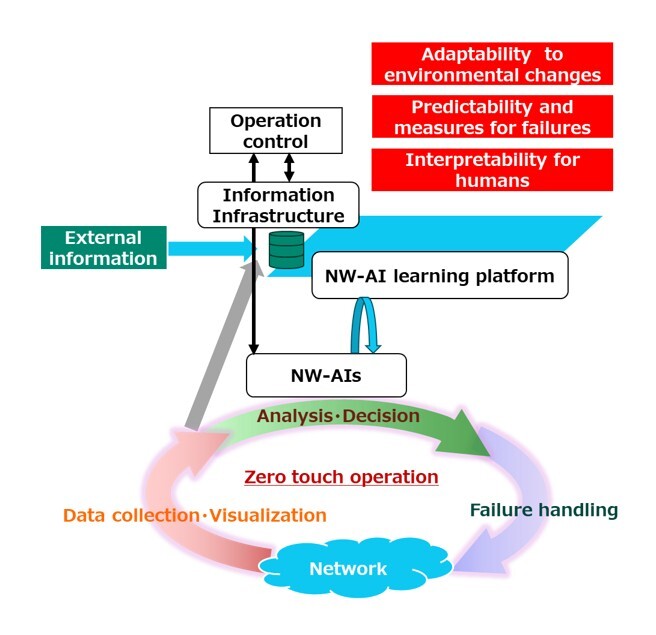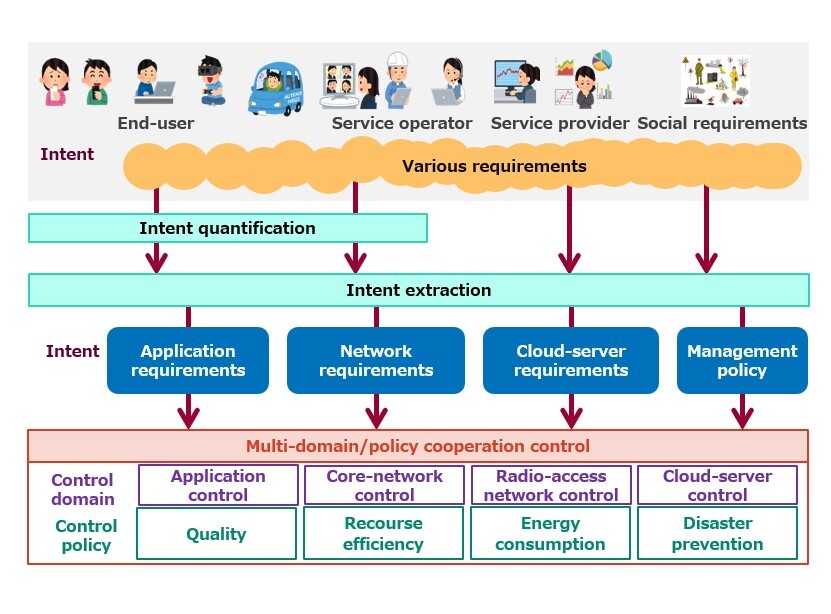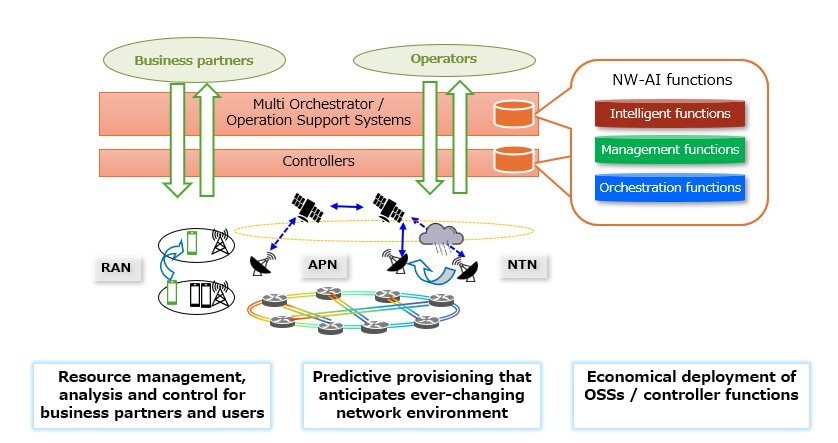Communication Traffic, Quality and Operation Research Project
The Communication Traffic, Quality and Operation Research Project is working on establishing Network-AI (NW-AI) integrated operation technology able to autonomously optimize network and services and implementing it in society. Specifically, we are studying technologies to make each phase of network operations (awareness, analysis/decision and execution), which are performed manually by operators, intelligent/optimized by NW-AI. To cope with predictable failures and quality degradation, we are also investigating technologies to simulate various failures/quality degradation using simulated networks, such as digital twins, in the NW-AI learning platform to allow the NW-AI to learn autonomously. Furthermore, we are also studying architectures of orchestrators and controllers that control actual networks in accordance with control instructions from the NW-AI.
In the following, we present NW-AI research cases: NW-AI for self-evolving zero-touch operations (ZTO), Intent AI Mediator (Mintent®) for operations that continue to meet service requirements, and operational architecture for IOWN Cognitive Foundation®.
Image of project's R&D initiatives

Related rinks
R&D initiatives about NW-AI to achieve self-evolving zero-touch operations (self-evolving ZTO)
The impact on society of large-scale failures in ICT infrastructures is increasing year by year. To deal with failures in a predictive manner or to minimize their impact, we are researching ways to achieve self-evolving ZTO with the following features
- Adaptability to environmental changes: To autonomously deal with rapid environmental changes in ICT infrastructure, we are trying to establish a technology that detects the timing of AI model updates on the basis of changes in data trends, as well as machine learning technologies based on the data obtained in each operation phase, such as collection and visualization, analysis and judgment, and measures.
- Predictability and measures for failures: To minimize the impact of complex, unknown, and unexpected failures, we aim to improve predictability through learning process during the system construction and verification phases and to enable unexpected failures to be autonomously handled in the maintenance phase. For example, we are advancing technological studies about generating a wide variety of failures in digital twins or verification environments to improve predictability of failures.
- Interpretability for humans: To realize and spread efficient and automated operations, systems need to be developed that allow for final judgment and evaluation by humans. By applying rapidly developing and spreading large-scale language models to maintenance operator response histories and system verification results, we are advancing technological studies to make operation processes interpretable.
Image of NW-AI to achieve self-evolving ZTO

Related rinks
Related videos
Intent AI Mediator (Mintent®) Research and Development Initiatives
To meet the diversifying needs of service providers and users (intent), Intent AI Mediator (Mintent®) has been developed to realize services that maintain a high level of satisfaction.
- Intent quantification technology: By developing a technology to quantify the intent of service providers and users through psychological experiments, the state of service provision is visualized.
- Mintent®: By making the most effective use of application, network, and cloud service resources on the basis of the requirements quantified by intent quantification technology, Intent AI Mediator provides services with a high level of satisfaction.
Image of Mintent®

Related rinks
Related videos
Operation Architecture for Cognitive Foundation®
To realize multi orchestrator and controllers for IOWN Cognitive Foundation®, NW-AI-oriented operational functions and system architecture have been developed.
- Network resource management: By management and control functions through analytical technology of APN paths and RAN environments, a network is achieved that can quickly respond to a business partner’s demands and user environment.
- Prediction-oriented provisioning: By performing high-speed provisioning combined with prediction, stable network communication is achieved in network topologies and environments that change from moment to moment, such as NTN.
- Optical network controller: Development support technologies that realize new operation functions economically have been established in a multi-orchestrator, controllers, operation support systems.
Image of Operation Architecture




